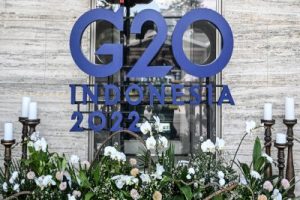
He passed on May 6th. He was a longstanding leader in international relations. So at 88 Joseph Nye, Joe to most in the international relations community, passed away.
Joe was notable for many things, but possibly most notably his leadership at Harvard and his determination to move from academia to policy making and back. Probably best known for his creation and application of ‘soft power’, especially with respect the United States, he represented the best of international relations thought and application. His career was close to singular. As described in the NYTimes by Trip Gabriel:
“Sometimes considered the dean of American political science, Mr. Nye led the John F. Kennedy School of Government at Harvard and held senior jobs in the Carter and Clinton administrations.”
He was appointed deputy under secretary of state from 1977 to 1979. He returned to office with President Clinton serving in 1993 as chair of the National Intelligence Council. In 1994, he was appointed assistant secretary for international security affairs at the Pentagon.
On the academic side Joe joined the Harvard faculty in 1964, and he became dean of the Kennedy School of Government from 1995 to 2004.
Joe was probably best known for the concept he proposed and advanced throughout much of his career – ‘soft power’. As Trip Gabriel pointed out:
“Mr. Nye developed the concept of soft power in the late 1980s to explain how America’s ability to get other nations to do what it wanted rested on more than the power of its military or economy; it also derived from American values.”
“Soft power tools include diplomacy, economic assistance and trustworthy information, such as that provided in Voice of America broadcasts. He laid out his thinking in a 2004 book, “Soft Power: The Means to Success in World Politics.””
““Joe’s seminal book on soft power is one of the very few books by a political scientist on international relations that had an impact on the real world beyond academia,” Derek Shearer, a professor of diplomacy at Occidental College in Los Angeles, said in an email.”
Joe also promoted – it is somewhat unclear who first described it, ‘smart power’. Smart power is identified as the combination of hard power and soft power strategies. According to the Center for Strategic and International Studies, smart power is an “an approach that underscores the necessity of a strong military, but also invests heavily in alliances, partnerships, and institutions of all levels to expand one’s influence and establish legitimacy of one’s action.”
Joe promoted, in other words, critical strategic diplomacy and policy making. I must say I was quite lucky to enjoy his thinking and analysis. I was invited a variety of times by my mentor Richard Rosecarnce to the The Belfer Center for Science and International Affairs at Harvard where later in his career he ‘hung his hat’. The Belfer Center is the hub of Harvard Kennedy School’s research, teaching, and training in international security and diplomacy, environment and natural resource issues, and science and technology policy. Rosecrance would include me in various US-China and US-Middle East gatherings. Joe Nye was almost always present and I was thoroughly impressed by his insights and his very congenial involvement in all the discussions we held. He will be sadly missed but one of his final thoughts on President Trump is worth repeating:
““I’m afraid President Trump doesn’t understand soft power,” Mr. Nye told CNN in an interview days before his death. “Think back on the Cold War — American nuclear deterrence and American troops in Europe were crucial. But when the Berlin Wall went down, it didn’t go down under a barrage of artillery. It went down under hammers and bulldozers wielded by people whose minds had been changed by the Voice of America and the BBC.””
I would also refer to the insight on Nye from colleagues at the The Wire China, Haitong Du, Margaret Siu, Brian Wong, Chengkai Xie, and Duo Yi:
“Nye’s influence was not merely conceptual; it was lived — and is lived. He reshaped how we study power, and how we reckon with the responsibility it entails. He also taught us that values endure beyond individual leaders, and can transcend institutions. He reminded us, time and time again, that the world needs morally sound and resonant universal tenets for effective global leadership.”
“He cautioned us — gently, firmly — against over-reliance on historical analogy. Determinism and fatalism, he warned, are no guides to the future. Truth is more complex than polarisation. And through it all, Nye showed that strategic thinking demands not just expertise, but prudent judgement of knowing when to act, when to hold back, and what principles must endure.”
And finally an opening statement from the PS and its editors:
“Just a few decades ago, the world understood power in one way: as the ability to secure one’s desired outcomes using coercion, intimidation, or payoffs. Joseph S. Nye, Jr., changed all that in the late 1980s, when he introduced the idea of “soft power” to describe the use of attraction to advance one’s interests and, later, when he devised the concept of “smart power” (which combines soft power with traditional “hard” power).”
Now I had planned to turn to the rather sad state of the UN as it approaches Year80. A focus on fading multilateralism. But I was called off that for the moment because of a serious back and forth between the Trump administration and the government of South Africa led by President Cyril Ramaphosa. Now South Africa holds the presidency of the G20 in this current year and President Trump has attacked the South African government for supposedly expropriating without compensation land from South African Afrikaners. Just this week Politico reported that the United States admitted a number of white South Africans to the United States:
“A group of 49 Afrikaners claiming to face discrimination and economic hardship in their home country arrived to the U.S. on Monday morning after being awarded an expedited pathway into the country by the Trump administration under a new program established earlier this year.”
As I noted in a previous Post here at Alan’s Newsletter, the Trump administration has ‘penalized’ South Africa with both Secretary of State Marco Rubio and Treasury Secretary Scott Bessent declining to attend the first G20 ministerial gatherings for foreign ministers and for finance ministers.
But it seems that is not where it has ended and there continue to be hints that Trump might not attend the Summit. As reported by Jeff Stein and John Hiudson at WAPO:
“The White House National Security Council has ordered U.S. agencies and departments to suspend work with the Group of 20 conference set to be hosted by South Africa this year, according to two people familiar with the matter, who spoke on the condition of anonymity to describe a government decision not yet made public.”
“The move follows President Donald Trump’s public threats to boycott the summit over claims that White South Africans are having their land taken away by the government under a new expropriation law.”
“How could we be expected to go to South Africa for the very important G-20 Meeting when Land Confiscation and Genocide is the primary topic of conversation?” Trump wrote on Truth Social in April. “They are taking the land of white Farmers, and then killing them and their families.”
While South Africa and its President, Cyril Ramaphosa, have rebutted Trump and his allegations, it would seem that the South African President has decided to try and ‘clear the air’ and set relations on a ‘better track’ – possibly getting Trump to agree to attend the Summit in November. As reported in AlJazeera:
“South African President Cyril Ramaphosa will meet United States President Donald Trump at the White House next week in an attempt to “reset” ties between the two countries, Pretoria has said.”
“The president’s visit to the US provides a platform, hopefully, to reset the strategic relationship between the two countries,” it added, saying the trip will take place from Monday to Thursday and the two leaders will meet on Wednesday.”
“The White House had no immediate comment on the meeting, which would be Trump’s first with the leader of an African nation since he returned to office in January.”
If we are right, Ramaphosa’s trip to the US is designed to secure assurances of Trump’s G20 South Africa Summit attendance and US involvement in the myriad of Ministerial gatherings, Working Group efforts and Task Force ones for the annual G20 Summit. If so, and his efforts succeed, a strong sigh of relief will be expressed I suspect by all G20 members. Success of US attendance will also help to secure US hosting for the 2026 G20 Summit. A further sigh of relief I anticipate.
Image Credit: Munk Debates

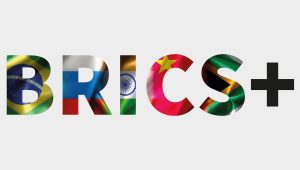
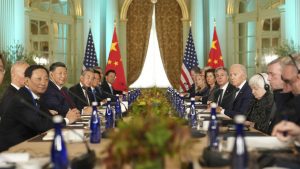 My colleague, Michael Swaine, now a Senior Research Fellow at the Quincy Institute for Responsible Statecraft, has produced two very insightful pieces on US-China relations. The longer piece can be found as a
My colleague, Michael Swaine, now a Senior Research Fellow at the Quincy Institute for Responsible Statecraft, has produced two very insightful pieces on US-China relations. The longer piece can be found as a 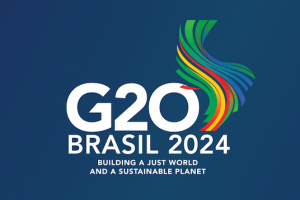 Who would think that the threat to the global order could emanate from global summitry leadership. But that appears to be a real possibility. Let me explain.
Who would think that the threat to the global order could emanate from global summitry leadership. But that appears to be a real possibility. Let me explain.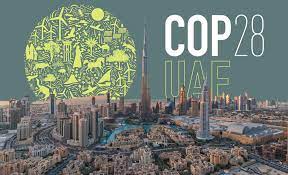
 We are definitely in the midst of Global Summitry gatherings. With the BRICS Summit just recently ended, we are deep into the G20 weekend gathering in New Delhi. So much commentary has accompanied these summitry gatherings. But I caution casual observers and readers: there are way too many assessments and conclusions drawn by all those folks that unfortunately barely pay attention to Global Summitry through much of the year. You can see this in the various ‘hair on fire’ commentaries in the assessments and consequences of the actions of key players in both the BRICS and now especially with the G20. Too many declarations of the G20 demise; firm conclusions that China and Russia would block any consensus statement that sought to condemn Russia’s aggression against Ukraine; the fragmentation of global summitry with the rise of the BRICS plus and the demise of the G20 with leaders from Russia and China choosing to absent themselves from summit.
We are definitely in the midst of Global Summitry gatherings. With the BRICS Summit just recently ended, we are deep into the G20 weekend gathering in New Delhi. So much commentary has accompanied these summitry gatherings. But I caution casual observers and readers: there are way too many assessments and conclusions drawn by all those folks that unfortunately barely pay attention to Global Summitry through much of the year. You can see this in the various ‘hair on fire’ commentaries in the assessments and consequences of the actions of key players in both the BRICS and now especially with the G20. Too many declarations of the G20 demise; firm conclusions that China and Russia would block any consensus statement that sought to condemn Russia’s aggression against Ukraine; the fragmentation of global summitry with the rise of the BRICS plus and the demise of the G20 with leaders from Russia and China choosing to absent themselves from summit.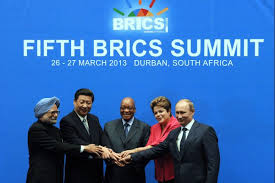
 The CWD focused recent attention on the global management of debt and the growing threat of a sovereign debt crisis. After a number of virtual gatherings and much focused discussion, the CWD completed a Debt Management Proposal that CWD passed to folks in India as India scheduled the first G20 Finance Ministers and Central Bankers Ministerial at Bangalore, or its official name, Bengaluru.
The CWD focused recent attention on the global management of debt and the growing threat of a sovereign debt crisis. After a number of virtual gatherings and much focused discussion, the CWD completed a Debt Management Proposal that CWD passed to folks in India as India scheduled the first G20 Finance Ministers and Central Bankers Ministerial at Bangalore, or its official name, Bengaluru. 